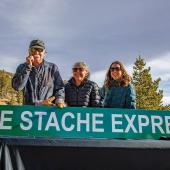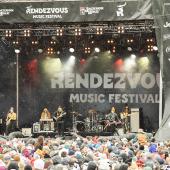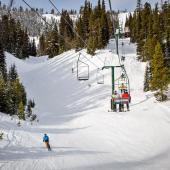Bridger Bowl Expansion
In these days of rapid land development, caused primarily by increased population, Montana has witnessed innumerable instances of clear-cutting, commercial construction, and other damaging impacts to our cherished communities and ecosystems. In our own back yard, a proposal for expanding the north and south boundaries of Bridger Bowl ski area beckons our attention. While most people welcome the idea of more terrain, it’s impossible to ignore the environmental and cultural impacts of such a sizeable project.
The proposed 611-acre expansion extends south into the Slushman’s drainage and north into Bradley Meadows. Bridger has requested a special-use permit from the U.S. Forest Service, which would increase skiable terrain by about 40%. Known for its unpretentious attitude and loyal following, Bridger wants to keep pace with Gallatin County’s rapid population increase by providing more terrain. Bridger also wants to offer new trails and keep the slopes uncrowded, to remain competitive with local resorts Big Sky and Moonlight Basin.
While Outside Bozeman was initially thrilled about the idea of skiing Slushman’s and Bradley Meadows with chairlift access, we had concerns regarding environmental damage and the deterioration of our treasured local ski hill. Would Bridger Bowl’s old-school, down-home feel be replaced by exorbitant prices and citified pretentiousness, as gaudy new developments sprang up? Would the Bridgers’ outstanding grouse and mule deer populations be irrevocably harmed? What about the wolverines and mountain goats? As is all too often the case these days, the Bridger Bowl development project seemed to be rife with disquieting implications.
We decided to talk with Doug Wales, the marketing director at Bridger Bowl, to examine the purpose, scope, and possible effects of the expansion. As an avid “Ridge hippie”, fifteen-year Bridger Bowl veteran, recreational enthusiast, and graduate of Montana State University, Wales represents what most people like about Bridger Bowl. Perhaps more importantly, he seems to have no behind-the-scenes agenda to alter the ski area’s existing atmosphere. Doug and the staff at Bridger have realistically surveyed the need for growth while remaining cognizant of the recreational lifestyle and needs of Gallatin County residents. We hope that the interview that follows will serve to inform the community of the expansion and to possibly alleviate concerns—indeed, after talking to Wales and to environmental groups such as Predator Conservation Alliance and Greater Yellowstone Coalition, our skepticism of the expansion has been quelled for the most part. We learned—both from speaking with Wales and through researching the Supplemental Draft Environmental Impact Statement (SDEIS)—that the proposal has been extensively analyzed by proponents and opponents alike and if approved, will be conducted properly, keeping all interests in mind. Bridger, it appears, will remain Bridger after all.
O/B: What is the main goal or purpose of the proposed expansion?
Bridger: The expansion is looking at the next 40 years. The first thing I would like to address is that this is Bridger’s 50th anniversary and we are a private, non-profit organization. The purpose of the boundary expansion is really that we had to update our master plan, which is a requirement of the lease we have with the Forest Service. It’s a 40-year lease now, and we have to look at long-range planning. As a community ski area we have a charter to provide a quality ski/snowboard experience at an affordable price in a financially sound manner. Primarily, our charge is to keep Bridger Bowl a healthy and viable operation for a quality ski/snowboard experience. In doing so, we have to look at the growth of the Gallatin Valley to determine what kind of impact that will have on Bridger Bowl. We need to ask ourselves if we can accommodate everybody and provide “freshies” for every skier. Looking at it from that standpoint, we realized we needed to enlarge the ski area to accommodate the volume, and also look at the ski market and therefore the skier’s needs. So, looking to the north and south topographically, we essentially determined that it was a feasible option to expand. Essentially, we are expanding to meet the growth of the valley, not to sell real estate and develop, because we are a private, non-profit organization.
O/B: The 2003 SDEIS Project Proposal differs from the original 1999 DEIS Proposal by calling for the construction of six new lifts, removal of one lift (Alpine), replacement of one lift, and the modification of two lifts. How many are planned to ascend to the Ridge?
Bridger: Well, right now we have two lifts proposed to the Ridge, and both are surface/pommel style lifts. They are slated to be ski patrol lifts so that they can effectively go up and do their avalanche-control work as well as any kind of rescue. A large group of people do not want us to have any lifts to the Ridge and keep it hike-only. On the other hand, another vocal group says that they are getting older and they still want to ski the terrain the Ridge has to offer through the use of a lift. We may consider having public use of one of the surface lifts. That does not mean that more skiers will be on the Ridge because we now can control the uphill capacity with a lift as opposed to a boot-pack trail. On peak days from the hours of 9:30 till 2:30 we have 1200 hikers. So, that is 200 an hour. We could limit the number on a surface lift to 150 skiers an hour.
O/B: So, would you eliminate hiking from above the Bridger lift?
Bridger: There is no talk of not allowing hiking from the top of the Bridger lift. Exactly how the new surface lifts will be used, as far as for ski patrol or public use, is still being determined.
O/B: How many more vertical feet will be added with the proposed expansion?
Bridger: 611 acres will be split fairly evenly north and south. As far as vertical feet, right now the highest point is above Bridger Gully at about 8700 feet. So, on the north side it doesn’t really get much higher. On the south side, a skier will get about 2000 vertical feet coming down the face of Slushman’s.
O/B: Describe the terrain in the proposed expansion areas?
Bridger: The north side offers some really nice bowls, including Wolverine Bowl, and some great pitches comparable to the Apron and Bridger Gully. On the top of Bradley Meadows, you can almost ski off 270 degrees—really interesting topography. We would have to do some tree-thinning for extended runs back to the lifts. On the south side, it has more exciting and continuous vertical to offer. The reality of the Slushman’s side is that it is more exposed to the wind, which scours the area. From an operational standpoint, the north side is protected more from the wind and does not receive as much sun exposure. The north side becomes skiable quicker compared to the south. So basically, the north side will provide more quality snow for a longer duration throughout the ski season.
O/B: Undoubtedly, many people are concerned about possible environmental consequences from the expansion, ranging from the disturbances of wildlife habitats to clear-cutting, water quality, and roadless areas. How do you plan on alleviating their concerns?
Bridger: I am truly concerned as well. I think the Environmental Impact Statement is a really good process. You need to assess the long-term ramifications and those need to be addressed. There is already a lot of pressure on the ecosystem in the Bridger range with the use of snowmobiles and backcountry skiers. Environmental groups are aware that Gallatin County is the fastest growing county in Montana (U.S. Census Bureau 2002). From a pragmatic standpoint, there will be an impact; however, if we are environmentally sensitive and responsible, the Forest Service will be diplomatic. We feel confident that we can regulate water bars in the case of erosion, and be sparse when thinning or cutting trees. Maintaining habitats where you can encourage clusters to live and function is essential. It does not mean if we go in there, that we are obliterating the wildlife or the habitat by any means. We are just doing it for terrain, we are not implementing any housing, or introducing any septic fields, and we are not doing any real estate. With all the pressure from existing backcountry traffic, the environmental groups and I really want to try and preserve the western side of the Bridger Mountains. It acts as a more beneficial ecosystem for wildlife, because of less exposure by wind and more water. The expansion is not some huge commercial development. It is a terrain issue in an attempt to accommodate more people with a quality experience. You can mitigate the impact and we are.
O/B: With all this talk of construction and additions, will skiers/snowboarders see a rise in season pass or daily lift ticket prices?
Bridger: Bridger Bowl has been on the same cost increase program for 25 years. This year, we did not increase the rates with the new lodge, and maintained the 15-visit breaking point for season pass holders compared to a day lift ticket price. The general manager, Randy Elliot, and I evaluate the prices each year and attempt to remain competitive. We are trying to do it in a way where we are not dumping this big price increase on the community.
O/B: What is the exact timetable for approval and therefore construction?
Bridger: The process has been underway for over seven years now. The revised proposal is currently on the desk of the Forest Service awaiting approval. If approved, we obviously want to begin construction as quickly as financially possible. So, we are waiting for approval with no exact timetable for construction.
O/B: Has there been any talk of opening the boundary for backcountry access similar to what Jackson Hole Ski Resort has implemented?
Bridger: We have looked at it and addressed the needs of the backcountry enthusiasts, but we have determined it is not a reliable option to open the boundary because of safety concerns.
O/B: What about introducing a terrain park to appeal to the enormous interest in freestyle skiing?
Bridger: Randy Elliot and I have addressed the topic and are aware of its extreme increase in popularity. Liability has dominated our concerns, along with where to put it, and maintaining Bridger’s grassroots feel. Obviously, we cannot ignore the interest, yet we want to do it the right way.
O/B: Describe the process of negotiating with the environmental groups and the Forest Service? Has it been difficult or relatively smooth?
Bridger: All parties involved are smart and intelligent people. Many of us are friends, so the dialogue has been prudent and discerning. We are all looking at the big picture while remaining aware of the past and future. It is extremely important to maintain good relations, and we want to be good land stewards. The ski industry is a green industry, and we are being practical in our negotiations to keep Bridger unpretentious. We are truly concerned about the real ski/snowboard experience, and therefore want to accommodate the community’s recreational lifestyle.











